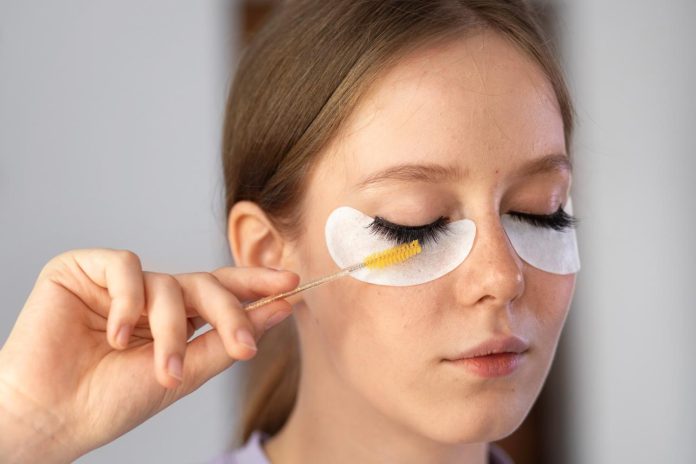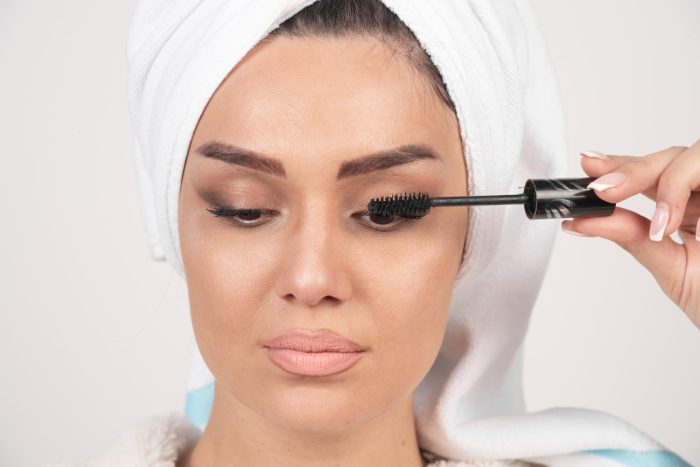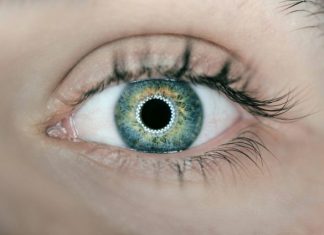
In the last few years, beauty lovers have started paying closer attention not just to how their lashes look, but how they function, how they feel, and how well they withstand everyday routines. Conversations about safer adhesives, ingredient awareness, and the right way to use products, like whether you can apply mascara to DIY extensions, have become increasingly common. It’s why so many people turn to trusted sources such as TAD Beauty when navigating lash-care questions that didn’t exist a decade ago. Healthy lashes are no longer a side detail of a makeup look; they’re becoming a central part of overall beauty wellness.
The Shift From “Lash Looks” to “Lash Health”
For a long time, the beauty world focused almost exclusively on aesthetics. Longer, thicker, darker lashes were the priority, even if the techniques to achieve them were harsh or short-lived. Strip lashes, heavy mascara formulations, rough makeup removal, and salon extensions all delivered dramatic results, but often at the cost of lash health.
Now the narrative is changing. Beauty routines have become more holistic. People want results that look good but also feel comfortable, support lash strength, and prevent long-term damage. This shift mirrors broader wellness trends: the recognition that beauty isn’t just a final look, but an ongoing relationship with your skin, hair, and lashes.
Instead of simply asking, “How can I make my lashes look bigger?” people are asking, “How can I keep my lashes healthy so they stay full on their own?”
Why Lash Damage Became a Turning Point
Lash awareness increased partly because so many people experienced damage from aggressive beauty habits. Overuse of waterproof mascara, repeated pulling during makeup removal, lash curling on weak hairs, and poorly applied extensions all contributed to thinning lash lines.
It’s only after people lose lash density or notice brittleness that they realize how delicate eyelashes truly are. That collective realization has shifted the beauty culture around lashes.
Suddenly there was a push for:
• Gentler adhesives
• Lightweight DIY extension systems
• Serums that support growth
• Non-clumping, conditioning mascaras
• Less damaging removal habits
People began learning that lashes need care just like hair and skin do. Once that awareness grew, healthy lashes moved from a niche topic to a mainstream priority.
Clean Beauty and Ingredient Awareness Have Raised Standards
As the clean-beauty movement expanded, consumers became much more conscious of what they put on their eyes. The ingredient lists on mascaras, adhesives, and lash-enhancing products are no longer ignored. People now look for:
• Non-irritating formulas
• Fragrance-free options
• Clean ingredients around the eye area
• Conditioning agents that support lash flexibility
This shift parallels a major rise in sensitivity awareness. Many beauty lovers discovered that irritation around the eye area wasn’t “normal”, it was a reaction to ingredients their skin didn’t tolerate well. That sparked a deeper understanding of lash and eye health.
Clean, gentle formulations quickly became not just a preference but an expectation.
The Influence of At-Home Lash Systems
The popularity of DIY lash systems changed everything. Instead of relying exclusively on salon extensions, people found they could apply lightweight clusters at home, choose softer adhesives, and remove everything gently at night if they wanted to.
These systems encouraged healthier lash habits because they:
• Place less tension on natural lashes
• Allow for more frequent breaks
• Promote better hygiene
• Reduce exposure to strong salon-grade glues
• Help users control weight and placement
In many ways, DIY lashes democratized lash care. People became more informed about lash anatomy, adhesive types, and how to protect their natural lash cycle.
What Eye-Health Experts Say About Lash Practices
As lash trends expanded, optometrists and dermatologists began contributing to the conversation. According to insights from the American Academy of Ophthalmology, improper lash practices, particularly with heavy extensions or harsh removal, can lead to irritation, follicle damage, or even temporary lash loss.
Experts emphasize three consistent principles:
- Avoid unnecessary weight on the lash line
- Choose gentler adhesives whenever possible
- Maintain clean eyelids to protect follicles
These medical perspectives pushed beauty enthusiasts toward smarter routines that support both appearance and eye safety. Healthy lashes stopped being an afterthought and became a core element of beauty education.
The Role of Skincare Culture in Lash Awareness
Skincare has become a dominant force in modern beauty. People now think about long-term results, barrier support, and gentle routines. Lash health naturally fits into this broader wellness framework.
With serums and lash conditioners becoming more common, many began incorporating lash care into their nightly skincare steps, right alongside moisturizer and SPF. That shift made lashes feel less like a cosmetic accessory and more like a natural feature worth protecting.
This skincare-first mindset has made lash maintenance feel normal, not excessive.
Why Healthy Lashes Contribute to Confidence and Comfort

Lashes play a subtle but powerful role in facial expression. When they’re full and healthy, they open the eyes, soften features, and add dimension even without makeup. This makes daily routines feel easier and lighter.
Healthy lashes also contribute to:
• Less irritation during the day
• More comfort when wearing contacts or eye makeup
• Better mascara performance
• More natural volume without added products
People often underestimate how much confidence comes from small details like lashes. When the lash line feels strong and looks naturally full, it creates a baseline boost, whether someone chooses a bare-faced look or a full glam moment.
The Trend Toward Long-Term Lash Wellness
Modern beauty increasingly values sustainability, skin-friendliness, and longevity. Healthy lashes fit perfectly into that movement. Instead of relying entirely on high-impact cosmetic tricks, people are building habits that support their lash line over time.
This includes:
• Using nourishing mascaras
• Taking mascara breaks
• Choosing lighter, reusable lash clusters
• Avoiding harsh rubbing during makeup removal
• Applying growth serums consistently
• Prioritizing lash-friendly ingredients
Beauty has become less about quick fixes and more about thoughtful, maintainable routines. And lashes, once treated as a purely aesthetic detail, are now recognized as a meaningful part of that evolution.









![A Detailed Guide to Recover Unsaved/Deleted Notepad File [2025 Newest]](https://jt.org/wp-content/uploads/2025/11/word-image-31546-1-e1764232693990-100x70.png)
